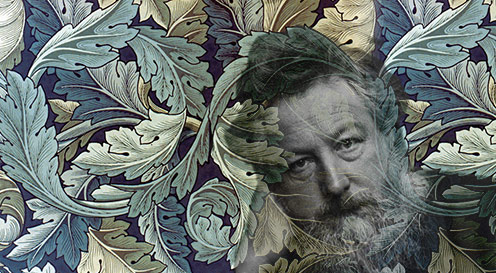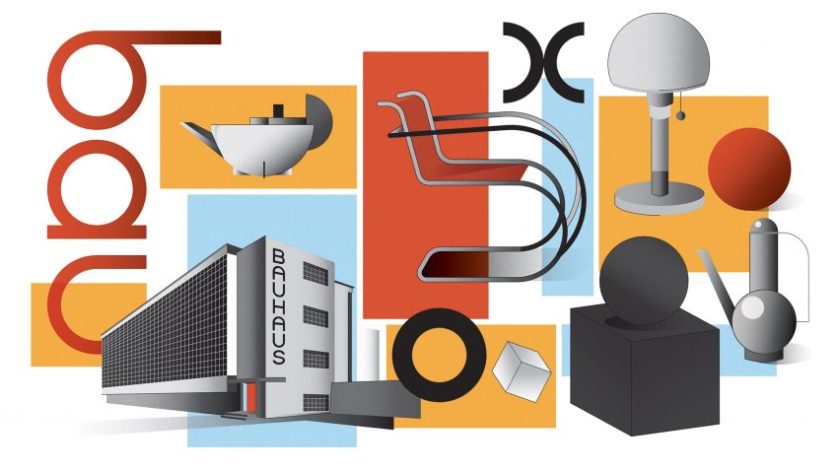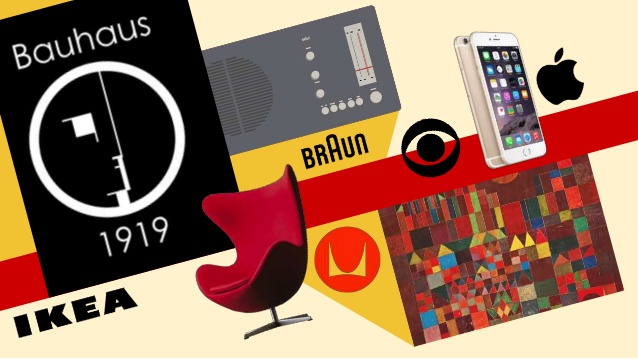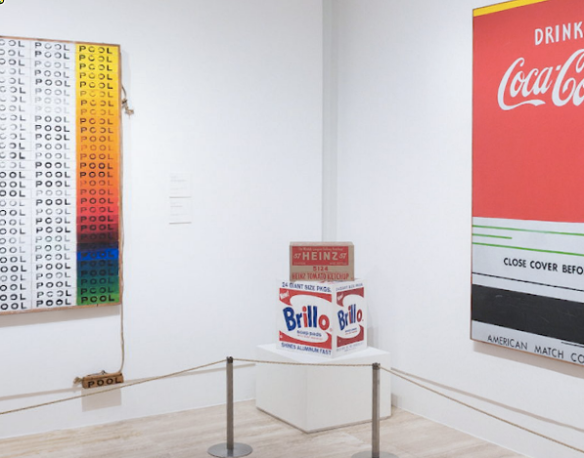Households have undergone great changes in recent centuries. However, it has seldom been shown how the influence that design has had on these changes. Although everything that surrounds us is design, we generally do not realize the influence design has on our lives. We know that hospitals are usually painted with light colors because they transmit peace or that the structure of supermarkets is designed so that we can buy more. But we rarely use these strategies in our homes. At least we were not so conscious until the arrival of the organizing councils of Marie Kondo (2014).
In this article, I want to focus on three movements within the world of design that revolutionized the world of the home: the Art & Crafts movement, the Bauhaus and IKEA. All of them wanted beauty to permeate everyday design, reach all homes and facilitate the lives of individuals. The proposed route will show us how they achieved it progressively, with more and more emphasis on the efficiency of the designs.

The First Revolution: Art & Crafts Movement
The Arts and Crafts movement was born around 1880 and influenced the world of design until the beginning of the 20th century. The ideology of the movement focused on the defence of the process of collaborative work and craft design (Cumming, 2004). Both his interior designs and his ideas about life, in general, had a strong impact on both English and international homes.
The most important designer of this movement was, without a doubt, William Morris. Renaissance man in an era, the Victorian, in which the industrialization seemed to impose itself with great force. Morris criticized both aestheticism and industrial brutalism and defended the restoration of unity between arts and crafts, between pure beauty of art and accessory, or utilitarian beauty, of ornament and tool. Beauty was presented as something truly necessary for human life as he himself stated in his famous conference The Beauty of Life: «For that beauty, what is meant by ART, using the word in its widest sense, is, I contend , do not get accident to human life, which people can take or leave as they choose, but a positive necessity of life, if we are to live as nature meant us; that is, unless we are content to be less than men. «(Morris, 2012).
But the ideal of beauty that Morris talks about does not refer to the work of genius exhibited in a museum. His craft and collaborative spirit made him focus on the home. The beautiful home was a projectof a community for a community (Wagoner, 2000). Moreover, he himself proposed what should be the way of life in these houses. A simple lifestyle inspired by nature was summarized in the following golden proposal: «Have nothing in your house that you do not know to be useful, or believe to be beautiful» (Morris, 2012). The creation of objects for these houses was characterized by their quality, their elegance, their functional character and respect for the authenticity of the materials used. However, also for those same reasons, the price of the pieces was so high that only families with good resources could buy them.
Despite the huge impact of the movement, not all designers followed the doctrines of Morris. On the one hand, Christopher Dresser embraced machinery and industry, becoming, in some way, the first modern designer. Dresser created hundreds of mass-produced items, from textiles and wall coverings to glassware and metal items. The combination of strong geometric shapes and organic patterns gives his work a surprisingly contemporary look (Whiteway, 2004). On the other hand, the architect Josef Hoffman and the designer Koloman Moser established the Wiener Werkstatte, or Vienna Workshop, to manufacture and sell high-quality furniture, glass and tableware (Schweiger, 1990). In order to reach the Viennese population, they broke with the traditional forms and bet on the utility: «Utility is our first requirement and our strength has to be in good proportions and the materials must be handled well». However, these were cases of isolated designers. We will have to wait for the appearance of the Bauhaus to perceive a new revolution in the home.

Illustration by Jack Bedford. via Dezeen
The Second Revolution: The Bauhaus
The Bauhaus was the first design school in the world. His first director, Walter Gropius, was convinced that to change the bourgeois society of his time, a change in artistic education was necessary. Following the principles established by Morris, he decided to create a curriculum that would unify the production activities, so that the differences between artists and craftsmen would be eliminated. The basis of the art was in the craft, so the artists had to go back to manual work, as stated in their manifesto: «Let us then create a new guild of craftsmen without the class distinctions that raise an arrogant barrier between craftsman and artist!» (Bergdoll & Dickerman, 2009). In this sense, the recovery of artisanal methods in the constructive activity unified crafts and fine arts.
The democratization of their products was due to the fact that, despite the ideal artisan, they did not reject industrial life. The Bauhaus opted for functionalism believing that art could be beautiful without ceasing to be useful. In addition to the excellent designs, mass industrial production drove down the costs so that the products were affordable for the general public. This approach was pioneering and laid the foundations of the modern design movement.
At the same time, this process was an aesthetic extension that extended to all areas of everyday life, «from the chair you sit on the page you’re reading.» (Heinrich von Eckardt). In this way, we can say that aesthetics is characterized by the absence of ornamentation, as well as by the harmony between function and form. Mies van der Rohe, with his famous phrase «less is more» printed a special character to the School. Especially this ideal can be seen in the style of rectangular concrete and glass buildings and the defence of functionality. The most significant designer in this field of the school was Marcel Breuer, with furniture that has become contemporary classics such as the chair Wassily (1925) designed for the painter and teacher of the school Wassily Kandinsky.

The Third Revolution: IKEA
Ingvar Kamprad started IKEA in the early 1950s. Following the guidelines of the modern movement, initiated by the designers of the Bauhaus, the Scandinavian style began to take its first steps. Ikea designs followed the modern and functional line but gave a human touch. The search for beauty was again found in nature.
World War II completely changed the world. Europe saw the great ideals it had preserved until then fall apart. The society was in full change both outside and inside the houses. Individuals were no longer comfortable with furniture designed for the nineteenth century that showed solidity and permanence. The new society was mobile and changing and needed a design that fit it.
The designs of IKEA were fully efficient: they allowed moving the furniture easily, from the store to the home, as from one house to another. The minimalist style did not go out of fashion quickly, at the same time that its low price allowed to buy new ones without great concern. In this sense, it can be seen how design influences the type of relationship we have in the home and that we can even have with the individuals who live in that house.
IKEA innovated in materials, technologies and surprised with minimalist designs that could be adapted to any house in the world. However, the most important revolution was in the construction of their designs. Since the idea was «built it yourself», the pieces had to be light and the simple ways for the consumer to understand how to build them. The consumer himself chose, transported and built at home, saving all those costs. In addition, the fact of successfully building a piece of furniture as an expert could have done provided a sense of well-being that influenced the appreciation of the object (Norton, Mochon, Ariely, 2012).
All this supposed a democratization of the design that supposed a revolution in the homes. The company itself refers to its democratic design as follows: «Democratic design brings good design to the many people by providing well-designed home furnishing solutions, with great form and function, high quality, built with a high focus on sustainability and at an affordable Price.»
Conclusions
Households have undergone great changes in recent centuries. However, it has seldom been shown how the influence that design has had on these changes. We generally do not realize the influence that design has on our lives, even though everything that surrounds us is designed. In this article, I have wanted to talk about three movements within the world of design that have been a real revolution in the home world: the Art & Crafts movement, the Bauhaus and IKEA. All of them wanted beauty to permeate everyday design, reach all homes and facilitate the lives of individuals. The route that I propose will make us see how they got it
The passage through the different stages of the design has served us for the influence that the design has had on the transformations inside the home. The ideas of the Art & Crafts movement had a decisive influence on the designers. However, his craftwork raised the costs of his designs, making only wealthy people able to afford them. For its part, the Bauhaus continued with the artisanal ideal, but without rejecting the industry, which allowed the creation of the first modern designs. Households no longer had to decide between artistic beauty or functionality, since these designs contained both. But total democracy came from the hand of IKEA. The simple and cheap designs revolutionized the market and houses. It is not that everyone could afford some furniture of the company, but even the houses that could afford much more also had some IKEA design. It is a design for everyone, around the world. However, this democratization has also brought about that the interior of homes is too similar to each other.
For this reason, today the trend is to re-customize the designs more and more. The appearance of the 3D machine allows producing a design perfectly adjusted to the needs of each user. The old buyer will shortly be the one who designs his own furniture, to his liking and believes them at home in a short time. We still have to wait a few years for the prices of 3D printers to go down and reach the homes. What is clear is that, when they arrive, we will live a new revolution.
Download full version















